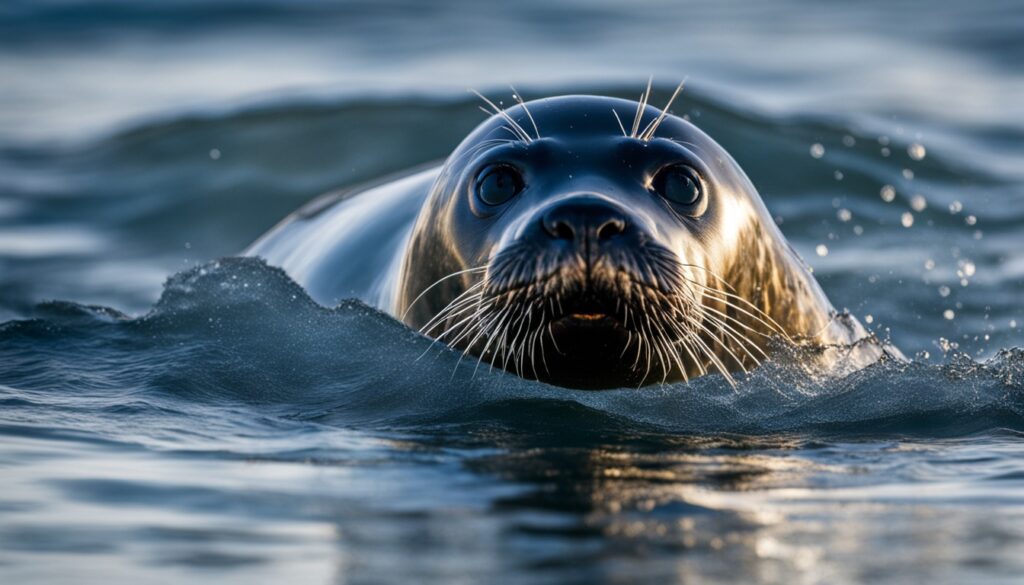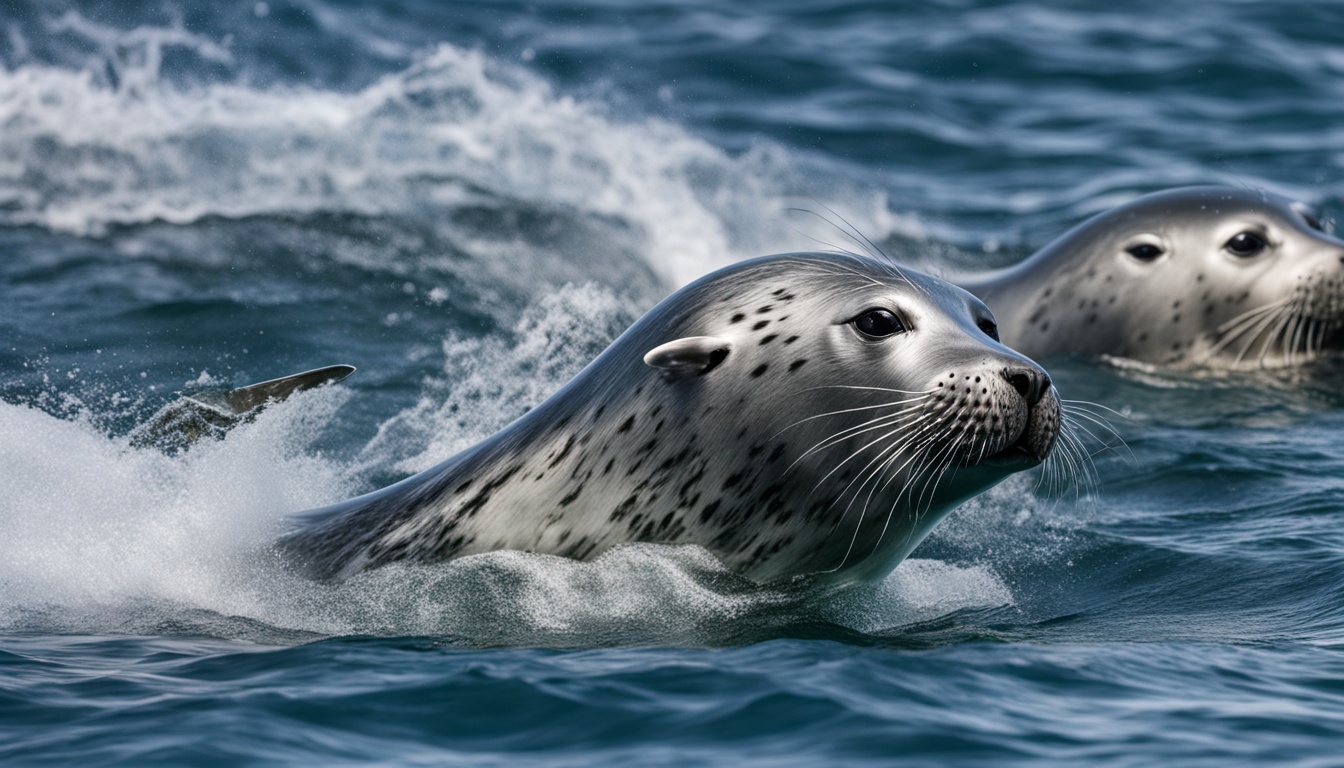Ever thought about how fast seals can swim? To understand their speed, we need to look at their body and how they move. Seals have a strong body and special flippers that help them move in the water. They use their powerful rear flippers and move side to side, reaching high speeds.
This article will dive into the amazing speed of seals in water. We’ll see how fast they swim and what makes them so good at it.
Understanding Seal Swimming Mechanisms
Seals have amazing swimming skills thanks to their unique propulsion techniques. These techniques help them move fast and efficiently in the water.
Propulsion Techniques of Seals
Seals use their hind flippers to swim. They move their large rear flippers in a sculling motion. This motion lets them speed up quickly and be agile. Their front flippers are shorter and help with steering and making sharp turns. These turns are important for swimming through rocky areas or catching small fish.
Comparison with Sea Lions
Seals and sea lions are different in how they swim. Sea lions use their long front flippers to swim fast, reaching speeds of 25-30 mph. Seals, like gray seals, swim at a slower pace of 14-23 mph. This shows how seals and sea lions have adapted to their own environments.
| Species | Swimming Speed (mph) | Propulsion Technique |
|---|---|---|
| Gray Seal | 14-23 | Hind flipper sculling |
| Harbor Seal | 13-20 | Hind flipper sculling |
| California Sea Lion | 25-30 | Front flipper propulsion |
| Steller Sea Lion | 24-27 | Front flipper propulsion |
How Fast Can Seals Swim?
Seals swim at different speeds, depending on their species. Their speed is affected by their body traits and the environment. This shows how well they can move in the water and adapt to their surroundings.
Average Swimming Speed of Various Seal Species
Seals of different species swim at varying speeds. Gray seals, with their big bodies, can go from 14 to 23 mph. Harbor seals swim slower, about 12 mph on average. These differences show how seals adapt to their marine homes.
Factors Affecting Seal Swimming Speed
Many things affect how fast seals swim. Their size, health, and the water’s temperature and currents matter. Bigger seals might be stronger but not as agile. Smaller ones can turn and move more easily.
Healthy seals with strong muscles can swim their fastest. The water’s flow and temperature also affect their swimming. These factors help seals move through the water efficiently.
Top Speed of Seals in Water
Seals are amazing creatures that can swim fast. Gray seals and harbor seals are two types that stand out. They have special skills that help them survive in the water. Let’s see how fast they can go to understand their amazing abilities.
Gray Seals and Their Velocity
Gray seals are known for their speed in the water. They can swim up to 23 mph. This speed is important for catching fast fish and avoiding predators.
Their strong bodies and big flippers help them move fast. They can also switch between swimming on the surface and diving deep.
The Harbor Seal Speed Capabilities
Harbor seals have their own special skills too. They can swim as fast as 18 mph. This speed is important for hunting and socializing with other seals.

| Seal Species | Top Speed (mph) | Swimming Adaptations |
|---|---|---|
| Gray Seal | 23 | Robust body, powerful flippers |
| Harbor Seal | 18 | Streamlined shape, agile swimming |
Both gray and harbor seals have amazing adaptations. These help them swim at different speeds. This shows how diverse their swimming abilities are.
Aquatic Speed of Seals: Behavioral Aspects
The speed of seals in water greatly affects their behavior, especially in hunting and social settings. They use their agility and speed to catch prey and move through the water. Their hunting and social behaviors show how adaptable and skilled they are at surviving.
Hunting Techniques Dependent on Speed
Seals have many hunting methods that need a lot of speed. They swim fast to chase fish and other sea creatures. Their speed helps them catch quick prey. Unlike other hunters, seals rely on their quick turns and speed to catch food.
Social Dynamics and Swimming Speed
How seals swim together is key to their behavior. Different seal types swim at different speeds based on where they live and who they are with. For example, they swim faster when fighting for food or slower when they sense danger. Their social groups affect how fast they swim, whether they’re talking to each other or avoiding others.
| Seal Species | Average Speed (mph) | Hunting Mechanism | Social Behavior |
|---|---|---|---|
| Gray Seal | 15 | Chasing | Cooperative hunting |
| Harbor Seal | 12 | Ambush | Vocal communication |
| Weddell Seal | 10 | Stalking | Solitary swimming |
Fastest Seal Swimming Pace: Notable Examples
Seals, like the gray seal, are not just fast swimmers; they are among the fastest in the ocean. They can swim up to 25 miles per hour in short bursts. This speed helps them avoid predators and catch prey, showing how well they’ve adapted to life in the sea.
Gray seals are known for their agility and efficiency in the water. Their sleek bodies and strong flippers let them move smoothly. This makes them some of the fastest seals around, crucial for hunting and socializing with others.
Learning about the fastest seal swimming speeds helps us understand their behavior and importance in the ocean. Research on their swimming abilities shows their natural skills and the need to protect their homes. By exploring these amazing creatures, we appreciate their role in keeping the ocean healthy.










